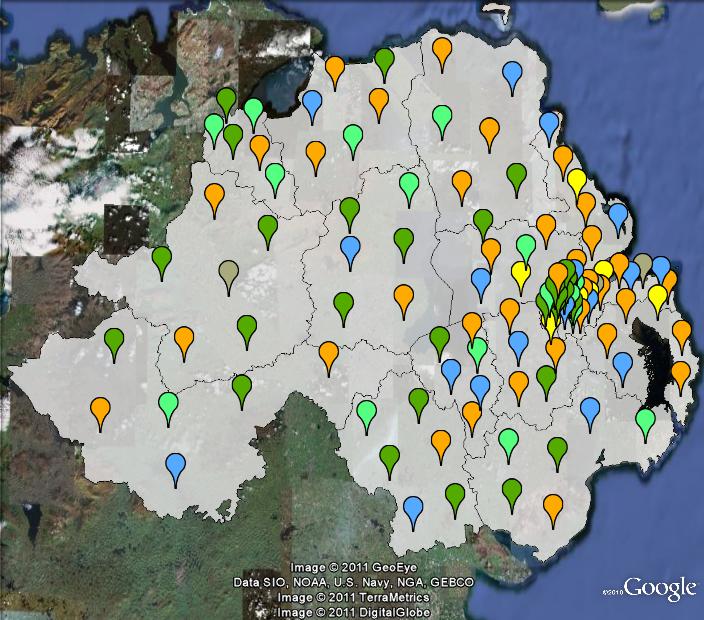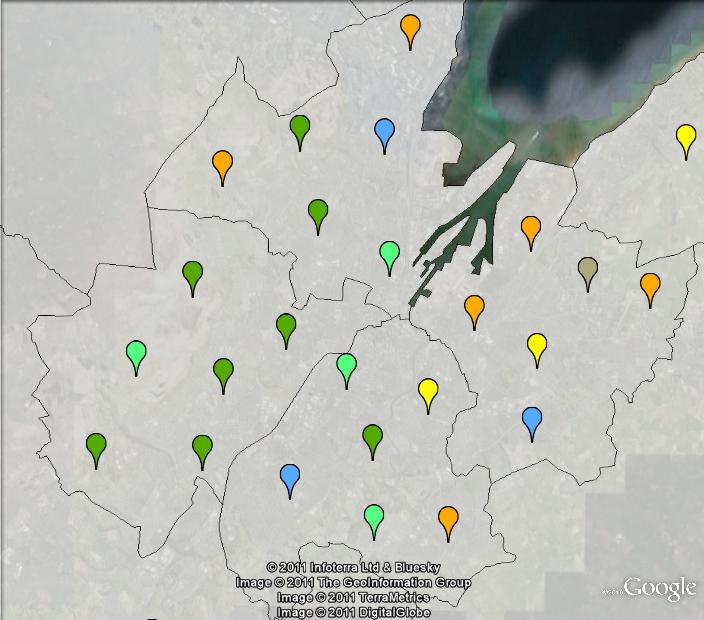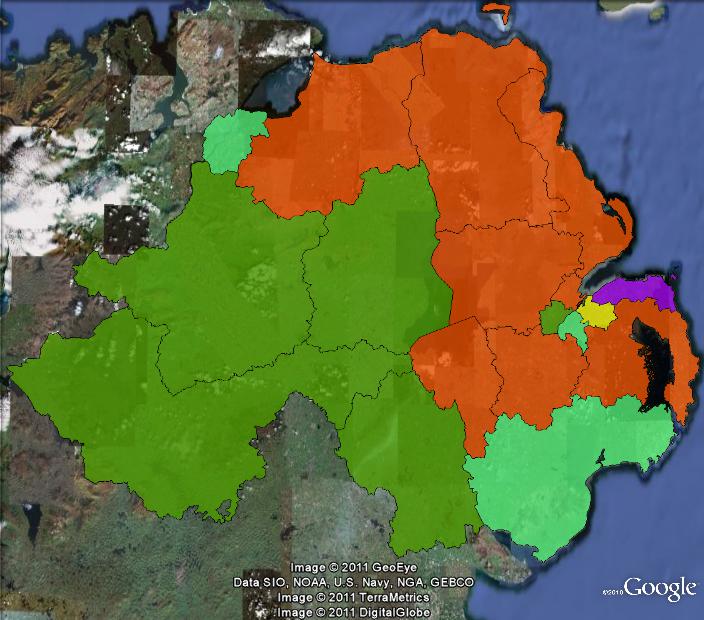In my continuing series of profiles on elections due in the month of May, today I’m focusing on the upcoming elections to the Northern Ireland Assembly on May 5.
The Northern Ireland Assembly has existed in its current form since the 1998 Assembly elections. These followed the Good Friday peace accord which brought about peace in Northern Ireland.
Northern Ireland’s first devolved legislature was the Parliament of Northern Ireland created in 1921. The body was elected by single-member districts and was heavily dominated by protestant unionists, leaving the minority Catholic population locked out of government. The region was governed by the Ulster Unionist Party (UUP) continuously until 1972, when the Parliament was dissolved and home rule suspended in the midst of the Troubles.
A number of other elected bodies have been elected in Northern Ireland since 1973. The first Northern Ireland Assembly was elected in 1973 to support a power-sharing executive. The Assembly was elected by single transferable vote, the proportional system used in Tasmania and the Republic of Ireland, with each Westminster constituency electing a number of MLAs. This system has been used for each subsequent elected body in Northern Ireland. The executive and Assembly collapsed in 1974 under opposition from the UUP.
Further attempts at a Constitutional Convention in 1975 and another Assembly in 1982 also failed.
The 1998 Assembly saw the largest numbers of seats won by the moderate Ulster Unionist Party and Social Democratic and Labour Party. They formed the majority of the new power-sharing Executive. The Executive’s ministers are elected proportionally by the Assembly, meaning each significant party holds ministerial positions, and the largest parties on the Nationalist and Unionist sides jointly lead the government in the roles of First Minister and deputy First Minister.
The more radical Democratic Unionist Party and Sinn Fein also participated in the first Executive with a smaller number of ministerial posts. Also represented in the Assembly was the non-sectarian Alliance and a number of smaller Unionist parties.
At the 2001 UK election, both moderate parties suffered losses of seats to their more radical rivals. The UUP was reduced from ten seats to six while the DUP increased its numbers from two seats to five. Sinn Fein won two seats off the UUP for a total of four, one more than the SDLP.
Devolved government collapsed in late 2002 around the Stormontgate scandal, when there were accusations of an IRA spyring at the Assembly headquarters at Stormont.
At the second Assembly elections in 2003, the DUP and Sinn Fein became the largest parties on the unionist and nationalist sides respectively. The DUP refused to serve in government with Sinn Fein, and home rule was not restored.
The 2005 UK elections confirmed the decision of the people of Northern Ireland in 2001 and 2003, with the SDLP and UUP suffering further defeats at the hands of Sinn Fein and the DUP. The UUP, who had held a majority of Northern Ireland seats prior to the 2001 election, were reduced to one seat, while Sinn Fein held five of eight Nationalist seats.
In 2006 the St Andrews Agreement saw the DUP and Sinn Fein agree to restore home rule, with the DUP agreeing to work with nationalist ministers, and Sinn Fein agreeing to recognise the new Police Service of Northern Ireland.
The last elections to the Northern Ireland Assembly were held in 2007, with the following result:
- Democratic Unionist Party – 36
- Sinn Fein – 28
- Ulster Unionist Party – 18
- Social Democratic and Labour Party – 16
- Alliance – 7
- Progressive Unionist – 1
- Green Party – 1
- Independent – 1
The Assembly is elected from the eighteen Westminster constituencies, with each constituency electing six MLAs using the Single Transferable Vote.
The following maps are an attempt at representing visually the geographical distribution of each party’s MPs, which is made difficult due to multi-member districts.


Since the 2007 election, Sinn Fein and the Democratic Unionist Party have managed to govern together without the government collapsing, although there have been moments when it appeared likely. DUP leader Ian Paisley led the government until 2008, when he retired and was succeeded by Peter Robinson. Robinson was hit by a scandal involving his wife Iris in 2010, and temporarily stepped down as First Minister.
Later in 2010, the UK election produced a largely status quo result. The redistribution only slightly changed the boundaries, and the new boundaries will be used for the Assembly in May. The UUP lost their one remaining seat, with sitting MP Sylvia Hermon becoming an independent after the UUP formed an electoral alliance with the British Conservatives. Peter Robinson lost his own constituency of Belfast East to the Alliance Party, which won its first ever seat at Westminster.

Trends suggest that Sinn Fein will continue their domination of nationalist politics. After four years as leaders in government the party has been largely successful in making home rule work. Many of the same trends are true for the DUP, but the party has been hit by a number of scandals. The strong position of Sinn Fein, and the divided unionist vote between the DUP and the UUP could result in a scenario where Sinn Fein ends up as the largest party, and therefore takes the position of First Minister. It’s yet to be seen if unionist parties are willing to serve in a government headed up by a party aligned with the IRA.


